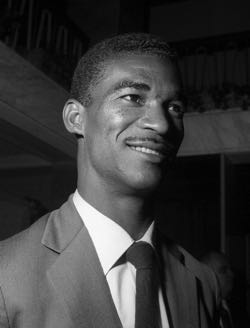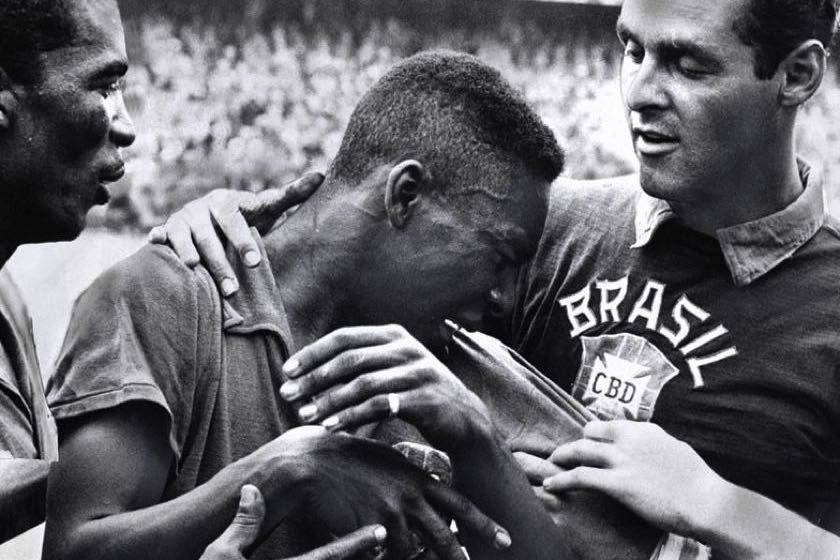They say that beauty is in the eye of the beholder, and with 1.5 billion people tuning in around the globe to watch the 2022 World Cup final between Argentina and France – around 20% of the planet’s population – that’s plenty of beholders.
Football has long been described as the ‘beautiful game’, but what are the origins of that moniker? Anyone that watches a mid-table Championship game on a cold and wet Tuesday evening may be inclined to disagree with the nickname, although maybe the struggle is part of the beauty? Of course, that wasn’t the original intent behind the phrase.

bet365 6 SCORES CHALLENGE
Predict scores to win cash prizes!
Win cash prizes by predicting the scores of just six Soccer matches, with 6 Scores Challenge at bet365! All is not lost if you fall short on one or two results, prizes are on offer for three, four and five correct results.
The prize value displayed for six correct predictions is the maximum available based on a single winner in that round and will be reduced in the event of a shared prize-pool.
Who Said Football Is the Beautiful Game?

Although later attributed to Brazil’s swashbuckling style of play in the 1970s, the ‘beautiful game’ was a name coined in rather more humble surroundings. It all started with the British journalist and media personality, Stuart Hall, who would go on to present the TV show, It’s a Knockout, and started out in his career as a sports reporter across the north of England.
He dreamt up the phrase to describe the performances of Manchester City – and specifically striker Peter Doherty, before going on to use ‘the beautiful game’ as a descriptive term for football during his reports throughout the 1960s and 70s. But it’s possible that the term pre-dates Hall entirely. The writer H.E. Bates, who would go on to pen The Darling Buds of May, amongst other works, is thought to have described football as the beautiful game as early as 1952.
What Does Jogo Bonito Mean?

Although the beautiful game as a phrase has been attributed to English sources, its origin may well have been translated from the Portuguese term ‘o jogo bonito’, or the more indirect joga bonito, which means ‘play beautifully’.
Given that Portuguese is the national language of Brazil, one of the first nations to truly embrace playing the sport in a captivating, off-the-cuff way rather than the more robotic tactics of football’s forefathers, it’s true that the beautiful game could well have been born on the streets of South America as much as on the boggy pitches of North West England.
One of the first players to be linked to the jogo bonito style was Waldyr ‘Didi’ Pereira, who hasn’t necessarily taken his place in the pantheon of globally-renowned stars, but who perhaps should have. Like most Brazilians of the 1950s, Didi opted to play his club football in his native country – bar from a single season at Real Madrid, and so perhaps that is one of the reasons why his legend hasn’t grown in-line with other South American stars.
But this is a guy who won two World Cups with Brazil, who was named player of the tournament at the 1958 edition and who is thought to have invented the ‘dry leaf’ style (sometimes referred to as ‘knuckleball’ today) of striking the football – the free-kick technique later popularised by Cristiano Ronaldo, amongst others.
One of Didi’s teammates in the Brazilian national team was Pelé who formed a deadly partnership with his attacking colleague at the 1958 World Cup. Pelé, considered football’s all-time great, scored six goals at that tournament, including a brace in the win over Sweden in the final, at the age of just 17. Pelé would later call his autobiography, My Life and the Beautiful Game, which lends further weight to the notion that the original jogo bonito was where the phrase was truly born.
What Is Total Football?

We can take the meaning of jogo bonito or the beautiful game literally: football is a sport that brings people of all ages, genders and backgrounds together to witness the most unpredictable drama and action unfold on the pitch. The experience can be one of beauty, glory, disappointment or heartbreak. Or the ‘beautiful game’ can be applied to the manner in which football is played, and it’s perhaps this meaning that was meant by Didi and co when they coined the jogo bonito philosophy.
That Brazil team of 1958, and many that followed, were purveyors of beautiful football; slick passing, fluid movement and an almost balletic togetherness on the pitch resulted in moments of individual brilliance and dream-like team goals. That DNA has continued throughout Brazilian football, including the 1970 World Cup winning team – who have been voted the greatest of all time, through players, such as Romario, Ronaldo, Rivaldo and the incomparable Ronaldinho. Other nations have adopted their own version of the beautiful game, with the Dutch ‘total football’ style another attempt at creating the perfect attacking unit.
Popularised by the Netherlands
Although popularised by the Netherlands national team and the country’s key club, Ajax, in the 1970s, the genesis of total football is thought to have come decades earlier. Jimmy Hogan, a Lancashire man who played for the likes of Fulham, Burnley and Bolton, went on to enjoy an extraordinary managerial career that took in stints with the Dutch and Swiss national teams, as well as MTK Budapest – at a time Hungarian football was the dominant force in Europe – Austria Vienna and finally Aston Villa.
Hogan’s own teams, and those of his friend Hugo Meisl, focused on a quick passing style and a fluid tactical system in which players had no set positions when attacking. The idea was to swamp their opposition with continuous movement – Meisl’s Austria were known as the ‘Wunderteam’ in the 1920s, sweeping all before them before the Second World War halted their remarkable progress.
Another English manager, Vic Buckingham, left West Brom behind to manage Barcelona and Ajax – at the latter, he introduced Johan Cruyff, a pioneer of modern total football, into the first team. One of Buckingham’s disciples, Rinus Michels, then led Ajax to three European Cups (now known as the Champions League) and a staggering eight Eredivisie titles. He too had adopted the total football principles, with the Amsterdam outfit playing the beautiful game in every sense of the phrase with their complete commitment to outscoring the opposition.
These days, the likes of Pep Guardiola are still bringing elements of jogo bonito and total football in their coaching style, which is proof that you can enjoy the beautiful game and still be successful. That’s a notion that would make Didi and the other originators of the ‘beautiful game’ very happy indeed.

